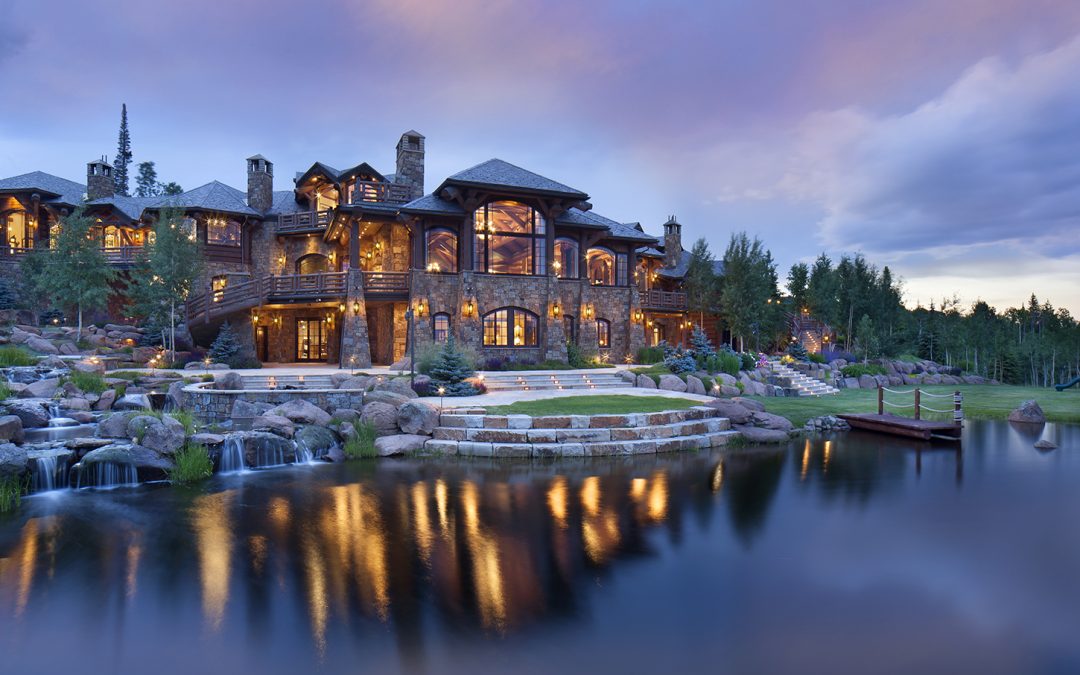In a nation obsessed with supersizing, American houses keep ballooning. Now, local officials are scrambling to curb mansion bloat.
“How big is a house?” mused Jeremy Samuelson, planning director for East Hampton, N.Y., where a working group recently proposed slashing the town’s maximum-allowed house size in half, from 20,000 square feet to 10,000 square feet.
“You can’t build a big box store in this town that’s bigger than 15,000 square feet, but our house size is 5,000 feet larger than that,” Samuelson pointed out at a May public meeting.
Towns from Aspen to Martha’s Vineyard are in a big-house brouhaha. Critics say mushrooming mansions cramp scenic vistas and local charm, consume excessive energy and inflate prices.
The challenge? The horse—or rather, the thoroughbred—has already left the barn.
Jaine Mehring, who founded Build.In.Kind/East Hampton, a land-use group, opposes humongous homes. Her 1,700 Instagram followers shower luxury-home photos on her feed with poop and vomiting emojis. “Greed is gross,” one snarked under a 12,000-square-foot spec house listed for nearly $12 million. “Exquisite architecture my ass,” quipped another.
At the May meeting, Mehring read aloud a letter by architecture critic Paul Goldberger, who remarked: “We want to be East Hampton, not Levittown-By-the-Sea.”
U.S. house sizes exploded 150% between 1980 and 2018, Census Bureau data show. In 2022, the median hit 2,300 square feet, with some megamansions swelling beyond 100,000 square feet, including “The One” in Los Angeles and billionaire Ira Rennert’s estate, dubbed The House that Ate the Hamptons.
“I mean, I don’t want to get judgmental, but does somebody really need a 4,600-square- foot house in a little rural town?” asks Darrell Shedd, of Truro, Mass., on Cape Cod’s northern tip.
Truro capped new homes at 3,600 square feet in 2017, but then, Shedd says, officials stuck in an amendment allowing bigger builds with special permits. “I’m not saying it was done on the sly,” says Shedd. “Our town meetings drag on. I was probably glazed over.”
Shedd’s now pushing to close the loophole. “We just don’t want this town to start looking like Nantucket or the Hamptons—which are totally out of control.”
Routt County, Colo.—home to Steamboat Ski Resort—adopted a proposal capping house sizes at 7,500 square feet in June. Debated for months, the hot-button issue packed public meetings.
“Do we want to have our landscape lined and dotted with trophy homes?” asked Commissioner Sonja Macys, backing the caps.
Commissioner Andy Benjamin, offered a different take on the caps. “It’s a very utopian ideal…but it’s, like, totally un-American.”
Big houses in unincorporated Routt County aren’t an outsize problem: Only 2.7% are currently more than 7,500 square feet, according to county officials. That’s led locals to question the crackdown on size.
“It appears to be an idea born out of misplaced envy and resentment,” wrote Pete Neidecker in a public comment. “Why is the County punishing success in life?” added Doug Button.
Button, a cattle rancher and real-estate developer who has lived in Routt County for 45 years, doesn’t like the idea of county officials telling people what they can and cannot do. “We’re pioneers,” he said.
In Pitkin County—home to Aspen—officials slashed the maximum new home from 15,000 to 9,250 square feet last November, noting that a big house raises “greenhouse gas emissions and increases environmental havoc.”
Now, they are eyeing a further cut to 8,750 square feet. Deep-pocketed buyers are rushing to snatch up existing mansions.
“The buzz around town is, they’re going to further limit the size of your home so you better buy now,” says Tim Estin of Aspen Snowmass Sotheby’s International Realty. This spring, a 22,000-square-foot estate with 11 bedrooms fetched $108 million.
“It’s just really shocking to many of us—these huge houses are the size of substantial hotels,” says Julia Livingston, the head of a working group in the Martha’s Vineyard enclave of Edgartown, Mass. Livingston’s group recently recommended a bylaw, known locally as the “big house bill,” to cap home sizes.
But a critic said it would unfairly take aim at family compounds.
“We have to keep our family compounds intact,” said Benjamin Hall Jr., a local attorney, at a February public meeting, “rather than have a large family leave the Island.
Nonetheless, Edgartown voters approved Article 96—a bylaw limiting residential lot intensity—132 to 35 in April.
East Hampton’s working group is also tackling “iceberg houses,” where basements are as big (or bigger) than the homes above.
Until now, basements—and attached garages—haven’t been counted in the total square footage of a house, encouraging homeowners to dig enormous, swanky subterranean lairs. Under the proposal, the garages and finished basements would count.
At the May meeting, Samuelson highlighted a real-world example: an 11,863-square-foot house on a lot meant for 6,100 square feet.
The basement, Samuelson noted, has “two guest rooms—bedrooms—an entertainment room, a wine lounge, a wine cellar, a theater, a tech room, a spa, a sauna, et cetera, et cetera, et cetera.”
“And that’s all lovely. That sounds amazing. I’m incredibly envious of the wealth and lifestyle of these people,” Samuelson added. But “it has nothing to do with whether this is the right size house for this property.”
Kirby Marcantonio, who owns a lifestyle magazine, Hampton Life, is a neighbor of the “humongous” house in Samuelson’s presentation.
“It’s this Taj Mahal monstrosity, sitting in this neighborhood of fairly small houses,” he said.
Builder Phil Kouffman warned more building restrictions could make living in East Hampton “impossible” and alienate second-home owners.

